Performance
The Anker Solix C300 Portable Power Station is built to work with Anker’s app, similarly to the Anker Prime chargers that I took a look at a while back. So before getting into any other testing I wanted to touch on the app and what all you can do with it. Overall I prefer to not have to use apps when I can, but I did want to see what it was all about here and one thing I do like is if you have multiple Anker devices that have app support they are all tied in here. That doesn’t include Eufy security or the home apps for remote vacuums. That said once you click add device and press and hold the display button on the C300 the app picked it up right away and it was easy to get connected. You can name the device and pick if you prefer it to connect using Bluetooth or WiFi, if you use Wifi you will need to put in that information as well. Right away the app notified me of a firmware update and surprisingly it listed out what was changed. In the past a lot of the Anker firmware updates had general change notes like “quality of life improvements” which didn’t let you know at all what has changed.
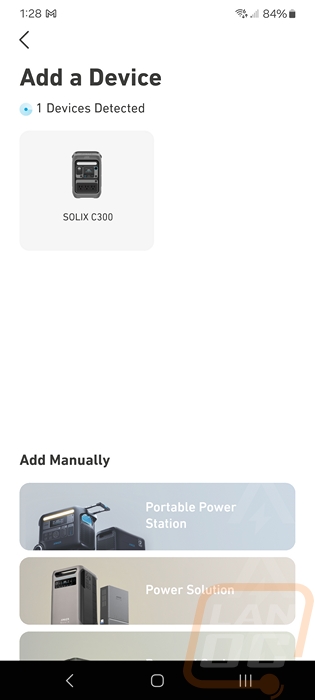
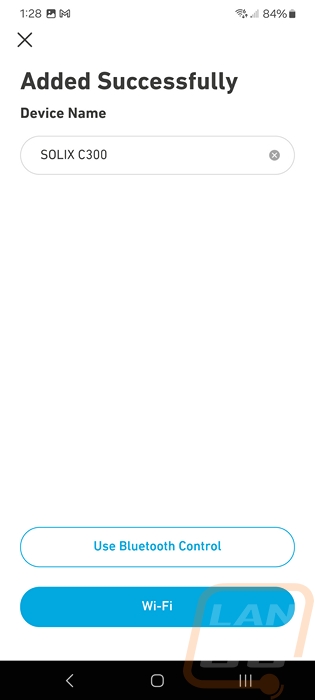
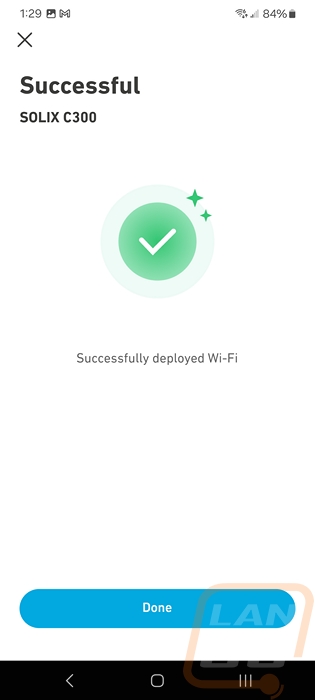
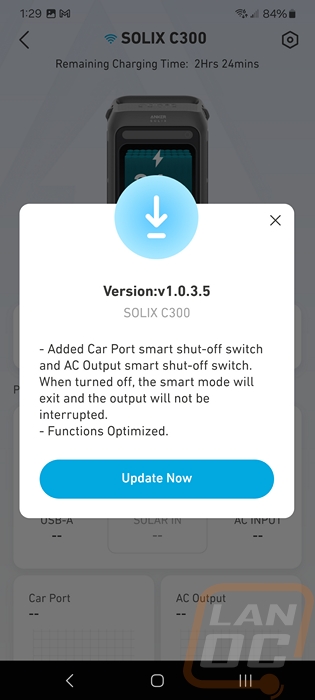
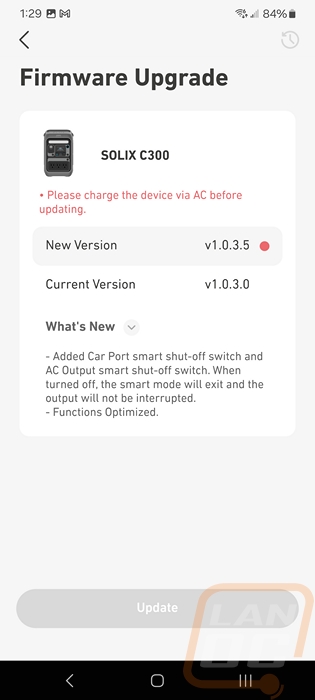
Once connected and updated the landing page looked a lot like what I saw with the Prime chargers. Up top is a picture of the C300 and inside it shows the current battery capacity status, that it is charging, and the battery temperatures. Above that, because it is charging we can also see how much longer it will take to get to full charge, when you aren’t charging this will show the remaining battery life at your current output rate. You can see in the pictures below a few screenshots of that charging process. I had it set to the fastest charging speed over AC which is the 325-watt input you see. The batteries eventually warmed up to 42c during the charge. The main page then has the port status of each of the ports. You can see when I had two things plugged into Type-C ports. One was pulling 2 watts and the other 1 watt with the total output up top. Down at the bottom, you have the car port and AC outlets and both of those have on and off buttons where you can turn them on and off remotely. Depending on how you use the C300, this is a nice smart outlet like function. You can also see the output graphed out as well. With the AC outlet, you can also schedule it to turn on and off a swell. Not pictured but down at the bottom you can also turn the light bar on and off and set its brightness as well and also turn the status screen on too, but that one seems pointless given that you are already looking at the app which has the same information and more.
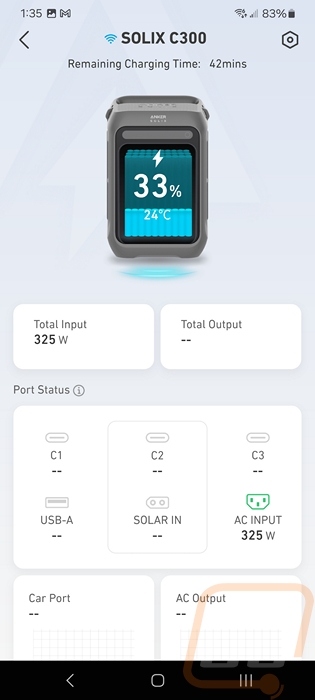
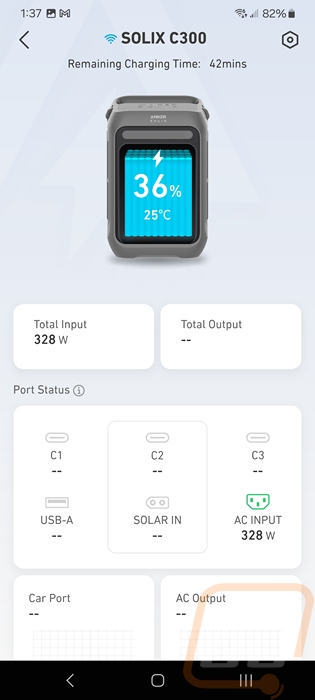
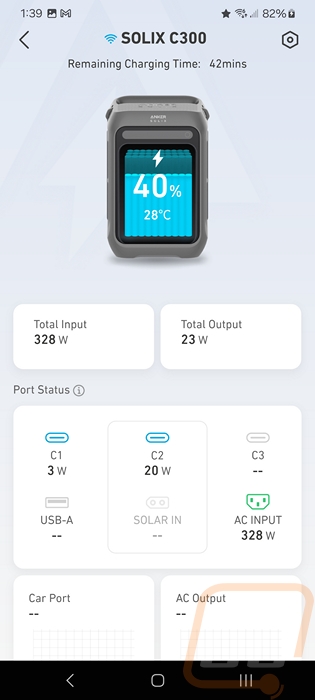
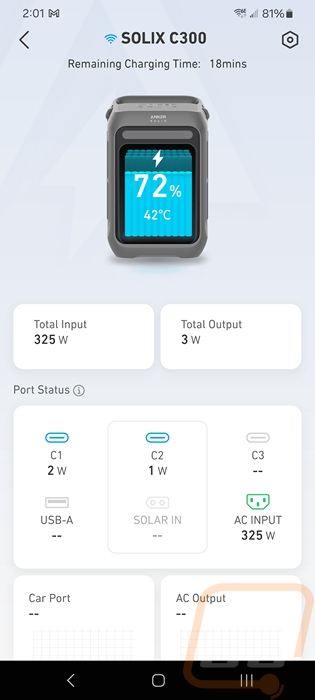
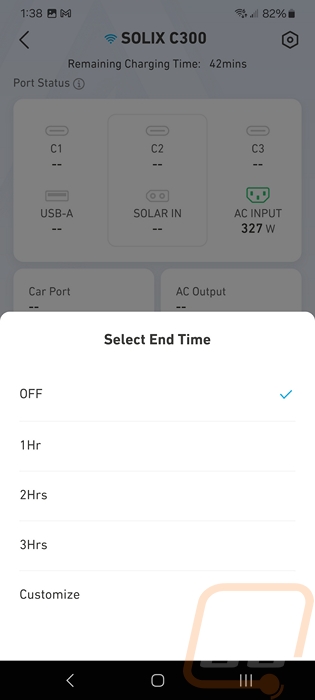
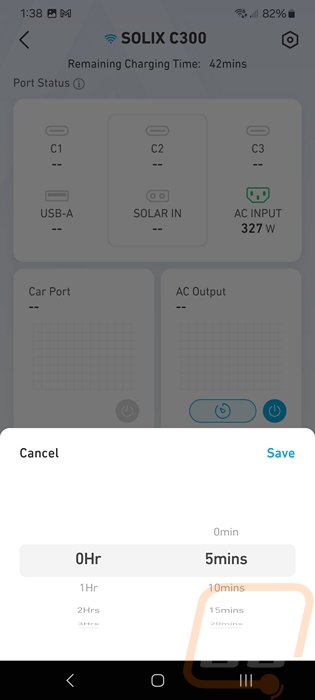
Up in the top right corner, you have a settings menu that you can open up. This is the main reason to use the Anker app as you don’t have control over any of this on the C300 itself. You can change the AC recharging power rate with 100-watt, 200-watt, and 330-watt options. This is cool if you aren’t in a rush and want to be gentler on the batteries or if you have the C300 plugged into something that is wattage sensitive like an inverter. You can set the timeout time, if you don’t have anything plugged in and using battery power it will shut off completely. The same goes for the power-saving modes for the car port and AC outlets as well. You can turn on the SOS mode for the light bar and also adjust the display screen brightness and timeout time. Beyond that the options just let you rename it, change your wifi settings, change between C and F, and check for firmware updates manually.
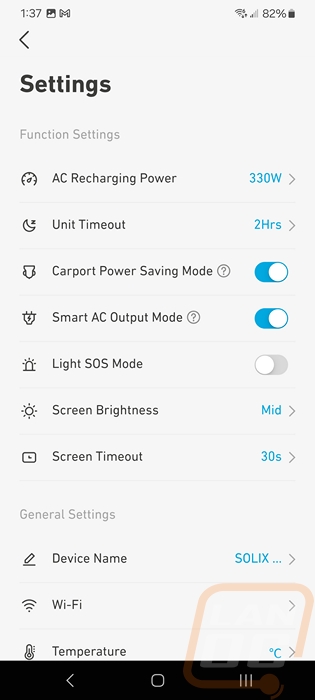
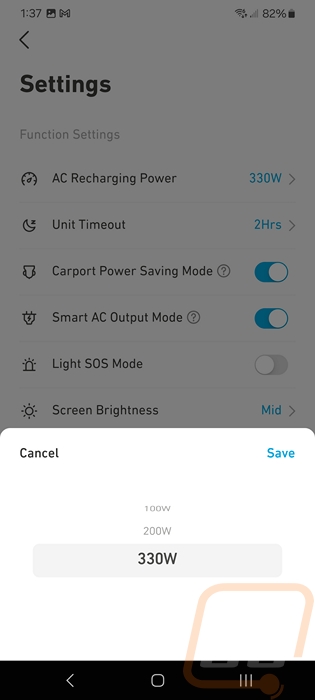
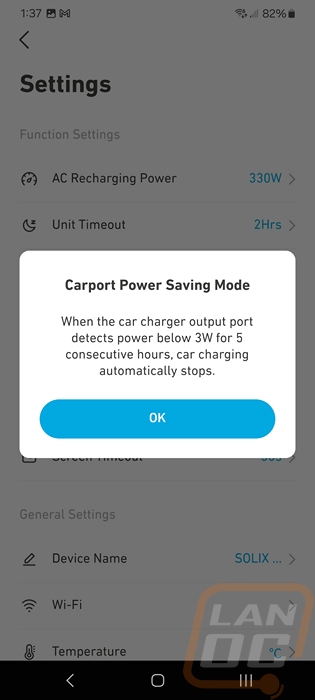
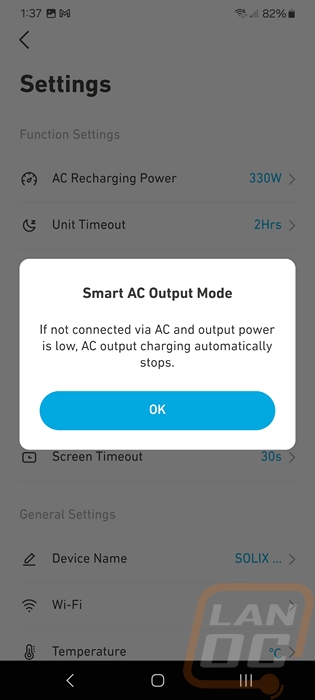
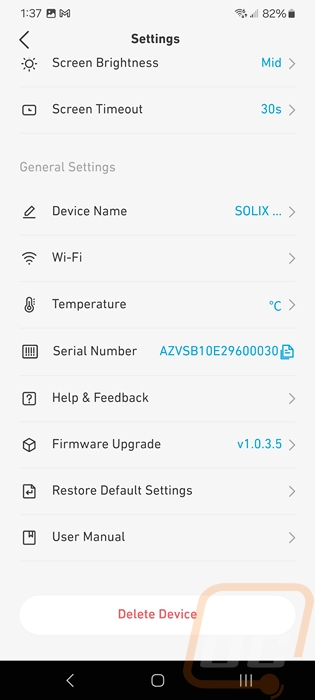
With that out of the way, how did the Solix C300 perform? Well as I mentioned previously I did have a problem with the original C300 that we had come in and I want to touch on those issues first. I had two problems with that first model that were most likely related. Running off of battery power was great for the first half of the battery, but past half way it dropped like a rock, using a percent every 30 seconds with it just keeping my keyboard charged and charging my phone. The other half of the issue was when charging, once it reached full charge the app notified me of warnings of output overload and it would shut things down. If I charged it with Type-C or unplugged it right away I didn’t have those issues. But with the replacement neither of those were issues. I’m not a big hiker or camper so I wasn’t using the C300 for those uses. I just like having more than enough battery power around the house so that when the power goes out we have things covered and the C300 did that. In fact, we had the power go out one night early in my testing and not only were we able to recharge our phones but with the light (as well as a lamp at my desk running off of my UPS) we played magic until the power came back on.
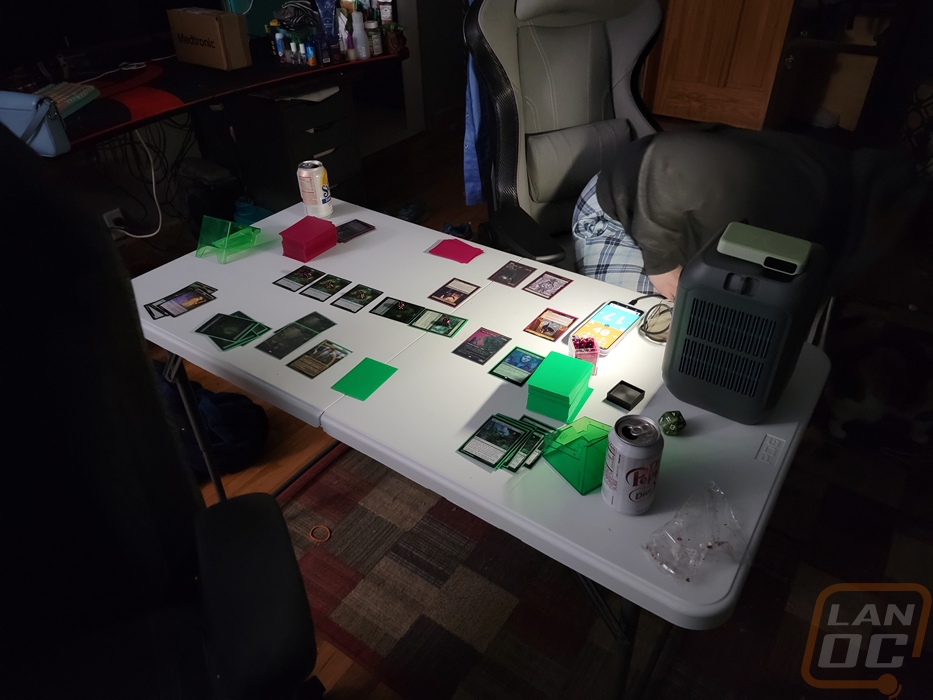
In the end, we hardly put a dent in the battery capacity, using around 1% of the battery life. Now imagine all of the other things you could be using that extra capacity with, especially with the AC outlets. You could power more lights, your modem and router, medical equipment, and more. The C300 can output 300 watts and surge up to 600 watts. Sadly that is just a hair under the surge power that you would most likely need to keep your full-sized fridge up and running. The overall power use on a lot of them is in the 150-180 watts range but when the compressor kicks on you will need the power to handle that surge. To give you an idea of what you could expect as far as battery life goes in those situations. I ran a PC off of the C300 and it was pulling 94 watts. At 81% battery life it projected 2.2 hours and I saw 2 hours and 13 minutes. Your modem and router might pull 20-40 watts total. You would see 8 hours of use at that rate or you could charge up your phones and keep the light on and still make it through the average power outage.

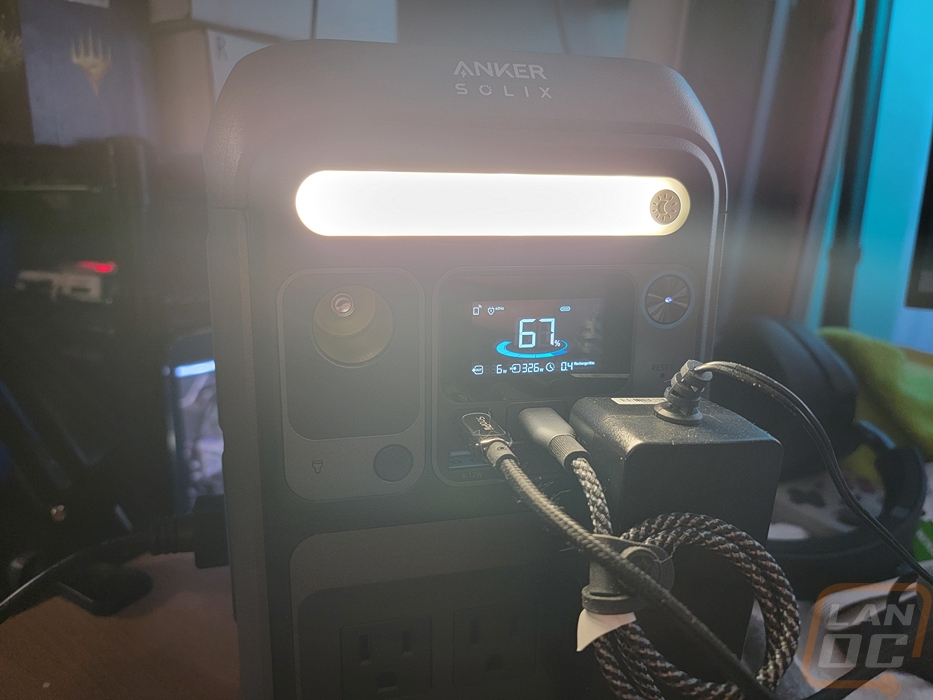
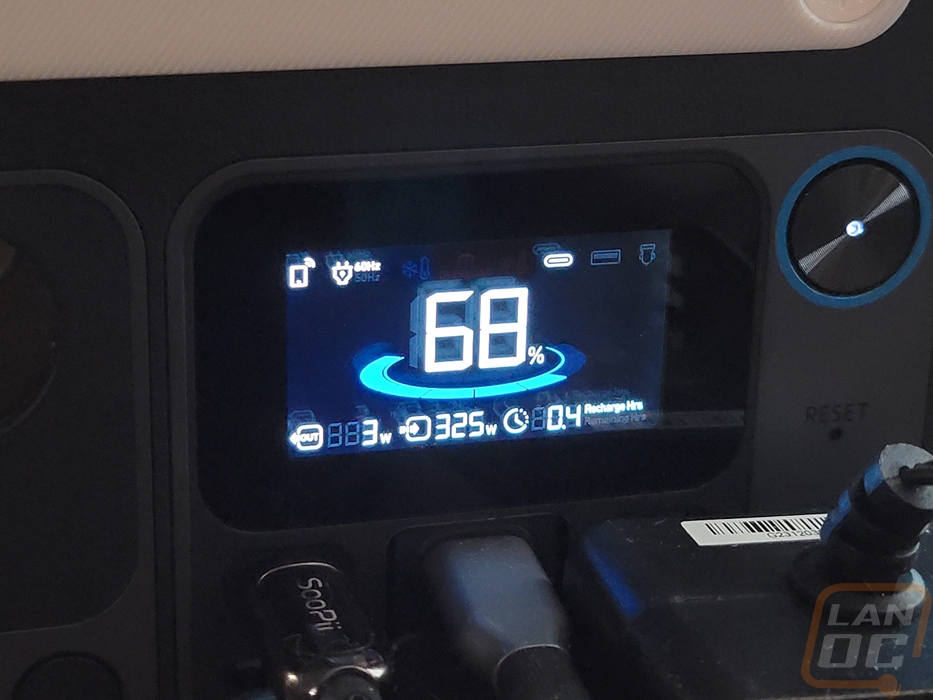
The other aspect that is interesting with the C300 is it also functions as a UPS. When plugged into AC power and with devices running on the AC plugs, if the power goes out everything continues to run, and when the power comes back on it will recharge and keep going. You need to adjust the settings in the app slightly to keep it from automatically turning off the power outlets, but it does work. So you could use this when camping or hiking but in between those trips it can be a safety net for something important. I mentioned it keeping your modem and router up but what about a medical device like a CPAP or a nebulizer?
Say you have used most of the charge up and have to recharge the C300, what are we looking at? Well, it depends on how you plan on recharging it. But if you are using the AC cord, you can set it to charge at up to 330 watts which I saw 325 watts in practice. You can charge it back up in 50 minutes which is crazy. Using the USB Type-C connection, assuming you have a charger and cord that can support it you can charge at 140 watts and that will take 1.8 hours. Then for Solar and using the Car Socket, you can charge it up in 2.5 hours with 100 watts of charging power. When running the AC charging at full speed things do warm up and I got our thermal camera out to check things out when I did that. Depending on the angle our hottest spot was 58.4c or 80.2c which is a significant difference. The app which has a sensor on the batteries was reading 42c so I’m inclined to believe that the lower of the two numbers on our thermal camera were true. When using that fast charging mode, there is a fan inside that kicks on. It isn’t silent but wasn’t too loud, if that is a concern turning the charging speed down takes care of it.
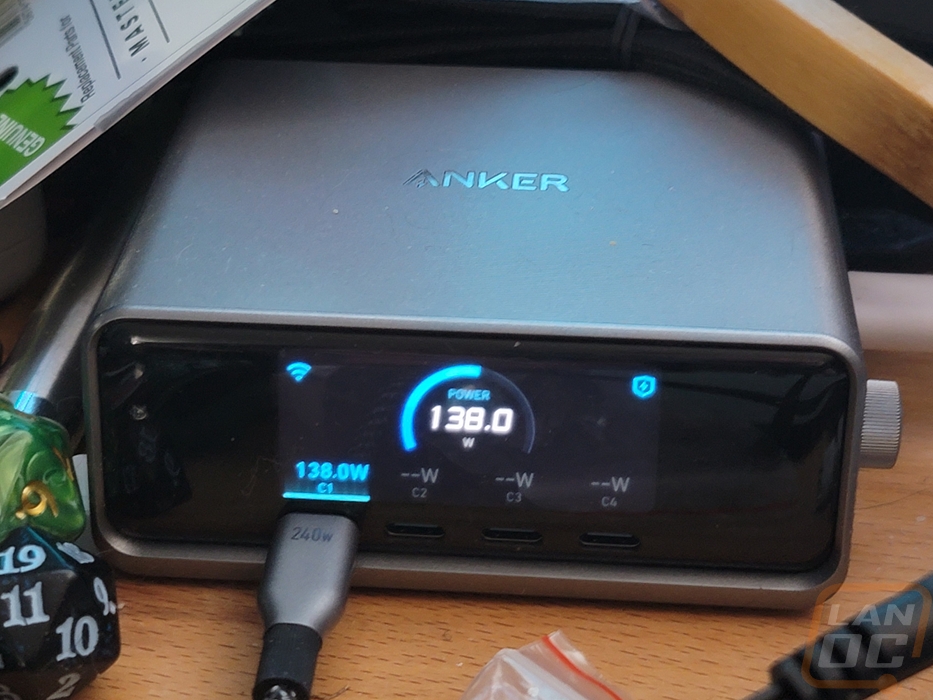
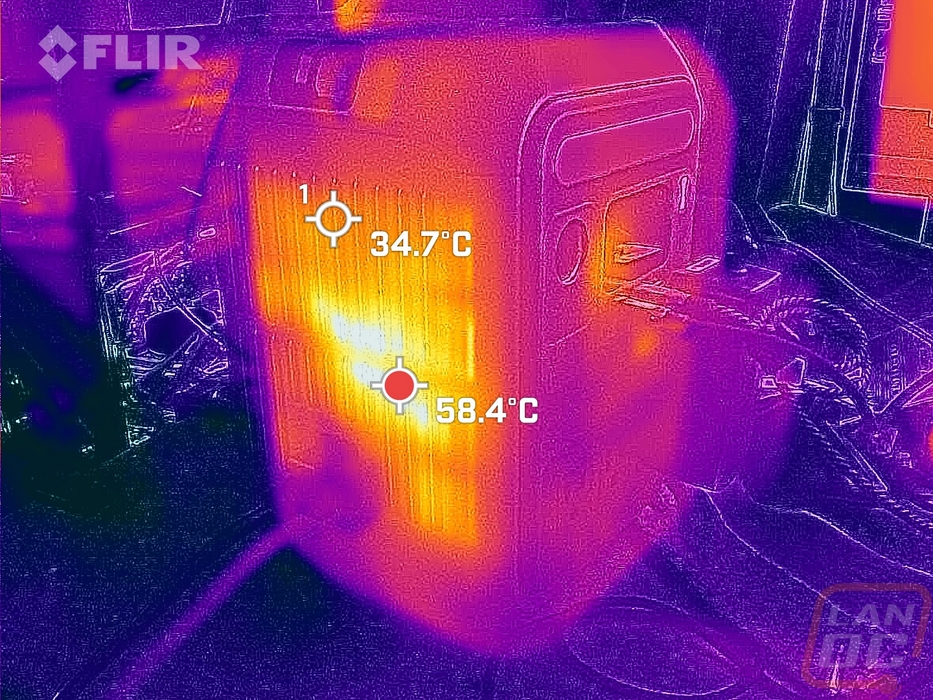
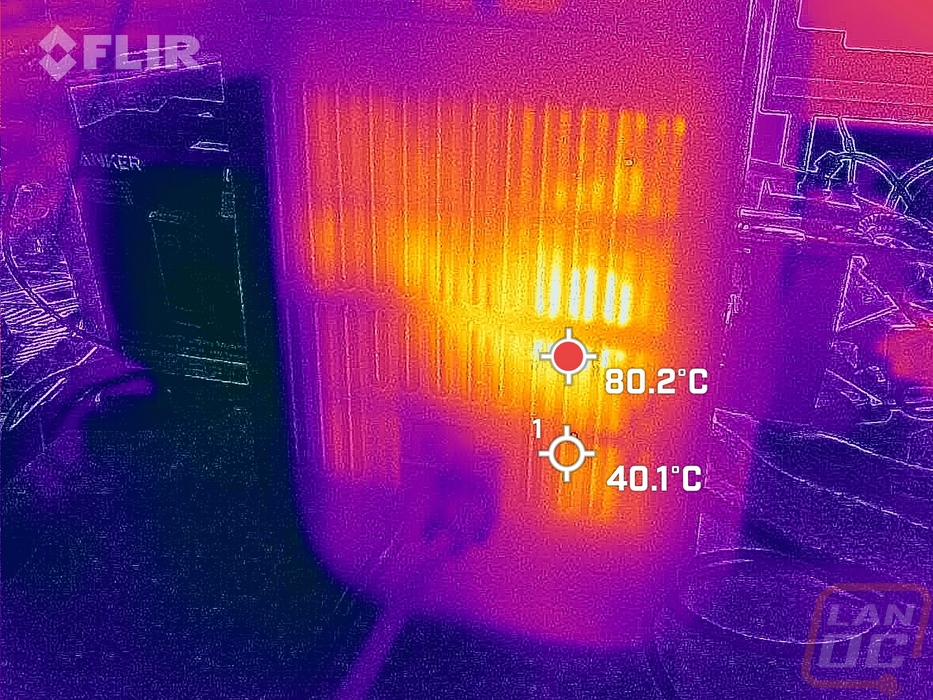
I was really impressed with the overall performance of the C300 but I did want to point out that the use case that Anker seems to be pushing in their marketing and on their website is that this is a camping or hiking device. That is going to depend a lot on your situation. This truly would be great for getting light and power when camping if you need a few extra amenities when doing it. But if you are hiking all day and bringing this along you better really need it because at over 9 pounds you are dragging a lot of extra weight on top of all of your other gear.

